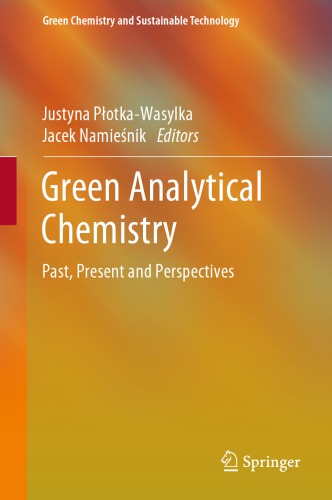

Most ebook files are in PDF format, so you can easily read them using various software such as Foxit Reader or directly on the Google Chrome browser.
Some ebook files are released by publishers in other formats such as .awz, .mobi, .epub, .fb2, etc. You may need to install specific software to read these formats on mobile/PC, such as Calibre.
Please read the tutorial at this link: https://ebookbell.com/faq
We offer FREE conversion to the popular formats you request; however, this may take some time. Therefore, right after payment, please email us, and we will try to provide the service as quickly as possible.
For some exceptional file formats or broken links (if any), please refrain from opening any disputes. Instead, email us first, and we will try to assist within a maximum of 6 hours.
EbookBell Team

4.3
48 reviewsThe book explains the principles and fundamentals of Green Analytical Chemistry (GAC) and highlights the current developments and future potential of the analytical green chemistry-oriented applications of various solutions. The book consists of sixteen chapters, including the history and milestones of GAC; issues related to teaching of green analytical chemistry and greening the university laboratories; evaluation of impact of analytical activities on the environmental and human health, direct techniques of detection, identification and determination of trace constituents; new achievements in the field of extraction of trace analytes from samples characterized by complex composition of the matrix; “green” nature of the derivatization process in analytical chemistry; passive techniques of sampling of analytes; green sorption materials used in analytical procedures; new types of solvents in the field of analytical chemistry. In addition green chromatography and related techniques, fast tests for assessment of the wide spectrum of pollutants in the different types of the medium, remote monitoring of environmental pollutants, qualitative and comparative evaluation, quantitative assessment, and future trends and perspectives are discussed. This book appeals to a wide readership of the academic and industrial researchers. In addition, it can be used in the classroom for undergraduate and graduate Ph.D. students focusing on elaboration of new analytical procedures for organic and inorganic compounds determination in different kinds of samples characterized by complex matrices composition.Jacek Namieśnik was a Professor at the Department of Analytical Chemistry, Gdańsk University of Technology, Poland. Justyna Płotka-Wasylka is a teacher and researcher at the same department.